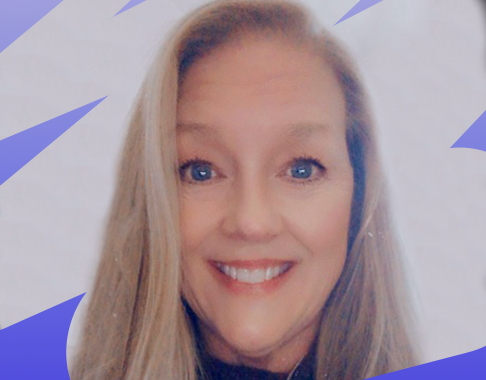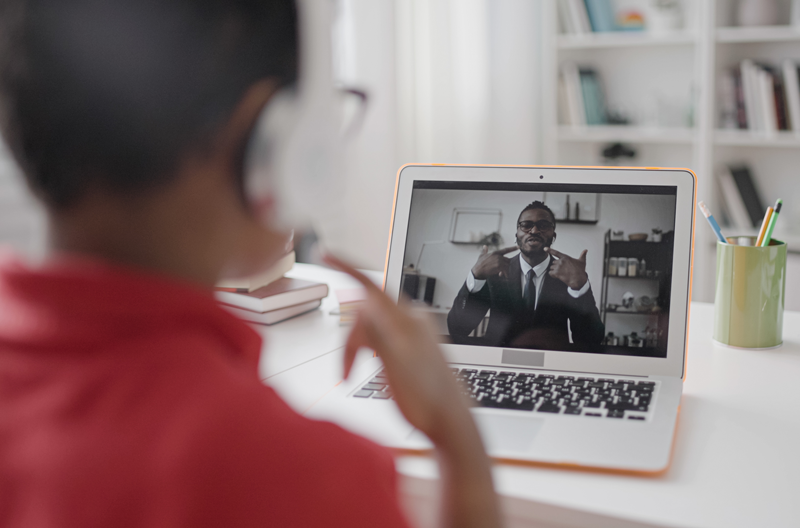February 24, 2023 12:02 pm
The Future of Speech Pathology is Virtual
Speech teletherapy services are an excellent way for students in the public school system to obtain the federally mandated minutes assigned during the Individualized Education Plan (IEP) meeting, especially when an in-person speech pathologist cannot be hired or located from the area to fill these posted positions.
Poet Hermann Hesse once said, “Everything becomes a little different as soon as it is spoken out loud.”
As a speech-language pathologist, I can relate to the sentiment. Speech-language pathology, in particular, has been shaped by recent events in ways we never expected. Thanks to the pandemic, “teletherapy speech services” became part of our collective education vocabulary.
Speech teletherapy: a little background
During the spring of 2020, every speech-language pathologist was thrust, seemingly overnight, into the virtual world of service provision. Many speech-language pathologists (SLPs) began a journey in teletherapy they never intended to begin. Some SLPs flourished and determined how to make it the best possible scenario for their students. Other professionals struggled due to lack of resources, support, and understanding, and couldn’t wait to return to in-person therapy. Many companies jumped on the bandwagon offering virtual services with very little research on how to be effective in that endeavor.
For those who embraced the ability to provide services virtually to students in need, however, it was a wakeup call — and an opportunity to provide these services virtually in areas where a qualified SLP could not be found or hired. By embracing this new and exciting service delivery model, SLPs delved into the world of technology and discovered the endless possibilities for students: interactive and eye-catching activities could motivate, enthrall, and inform their students, leaving them excited and engaged.
Imagine Learning responded by hiring licensed and certified speech-language pathologists with both school-based and teletherapy experience who:
- Are passionate about helping students in an educational environment succeed
- Offer interactive and skill-appropriate student activities focused on IEP goals
- Focused speech therapy sessions on required grade-level academic standards that each student must master
Looking forward: the future of speech teletherapy
Speech teletherapy is an excellent way to provide consistent and well-planned therapy to students, ensuring that all students are provided with their federally mandated IEP minutes each week. Parents expect schools to deliver those minutes as scheduled; they also expect schools to offer insight into their child’s progress at regular intervals. Parents are usually unhappy when their child’s school has no one to provide speech and language therapy, and often don’t want to spend the summer trying to fit in compensatory minutes missed throughout the school year.
Transitioning to teletherapy is typically easy for students who have grown up with access to technology in their homes and school environments. And, when speech teletherapy is provided in real-time (one-on-one or in small groups of 2 or 3 students) via a platform that is FERPA- and HIPAA-compliant, it mirrors in-person therapy in its effectiveness and student progress.
One Imagine Learning SLP shared:
Continuing teletherapy collaboration
Speech teletherapy also allows for collaborative interaction with school staff and parents, just as in-person speech therapy does. The Imagine Learning SLP handles all aspects of a student’s case management, from screening to direct therapy minutes. IEPs are held virtually, which allows parents to participate from anywhere, and has increased the probability that the parent will be able to attend the IEP meeting and have an active role in planning for their child’s academic success. Parents often say that meetings held virtually are less stressful, more convenient, and less intimidating than in-person IEP meetings, which is thrilling to hear.
The convenience, effectiveness, and equity of speech teletherapy is unparalleled. Now that students, schools, and parents have gotten a taste of the benefits of virtual therapy, we’re unlikely to return to solely in-person speech-language therapy anytime soon. The future of speech-language therapy is virtual — and bright.
Additional Reading: Speech and Language Telepractice
Explore these additional resources that discuss the efficacy of speech and language telepractice:
Coufal, K., Parham, D., Jakubowitz, M., Howell, C., & Reyes, J. (2018). Comparing traditional service delivery and telepractice for speech sound production using a functional outcome measure. American Journal of Speech-Language Pathology, 27(1), 82-90.
Gabel, R., Grogan-Johnson, S., Alvares, R., Bechstein, L., & Taylor, J. (2013). A field study of telepractice for school intervention using the ASHA NOMS K-12 database. Communication Disorders Quarterly, 35(1), 44-53.
Grogan-Johnson, S. (2021). The five Ws meet the three Rs: the who, what, when, where, and why of telepractice service delivery for school-based speech-language therapy services. Seminars in Speech and Language, 42(02), 162-176.
McCullough, A. (2001). Viability and effectiveness of teletherapy for pre-school children with special needs. International Journal of Language and Communication Disorders, 36(S1), 321-326.
Towey, M. P. (2012a). Speech telepractice: Installing a speech therapy upgrade for the 21st century. International Journal of Telerehabilitation, 4(2), 73-78.
About the Author

Marva Mount, M.A., CCC-SLP, F-NAP
Related Services Director, Imagine Learning
Marva Mount, M. A., CCC-SLP, F-NAP, is the Related Services Director at Imagine Learning. She has almost 40 years of experience as a speech-language pathologist and special education administrator. Her passion has always been providing exceptional services to students with disabilities in the public-school setting. Marva is a published chapter author, journal author, and international speaker. She is a distinguished fellow in the National Academies of Practice, and she received the Texas Speech and Hearing Association (TSHA) Hall of Fame award in 2018 for her contributions to the field of speech-language pathology. She is licensed to practice in Texas, Arizona, Oklahoma, Hawaii, and California, and she holds the Certificate of Clinical Competence (CCC) from the American Speech-Language-Hearing Association (ASHA).
